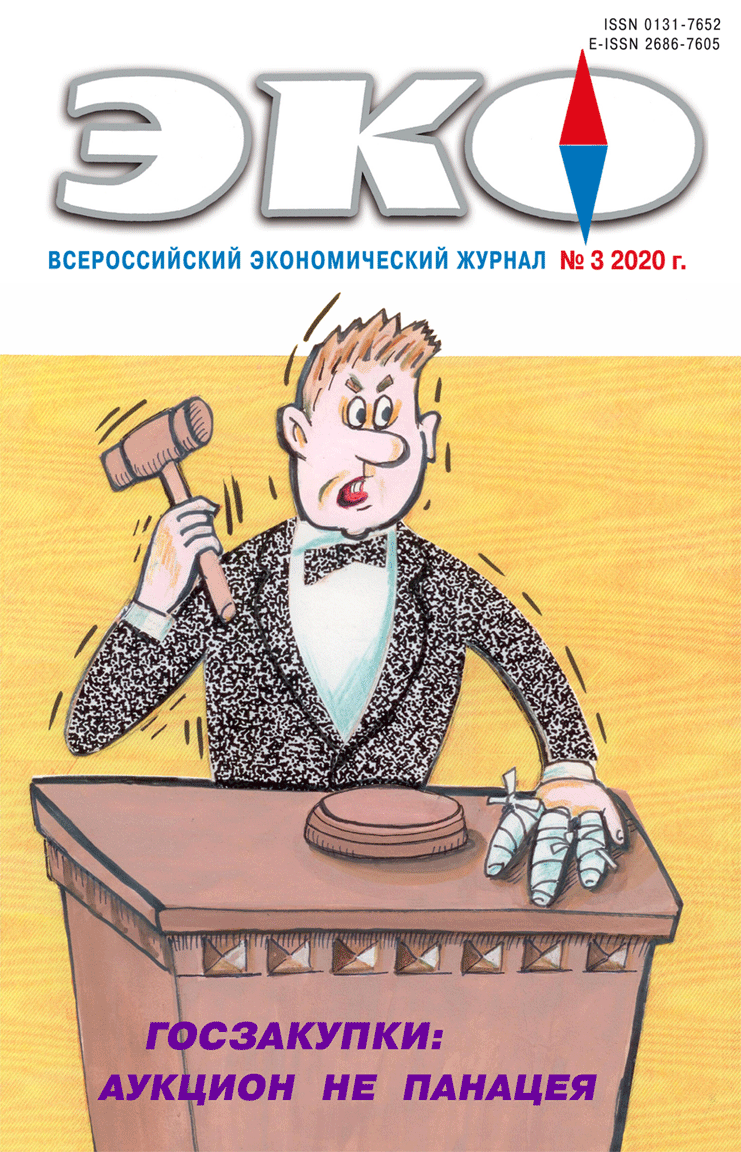MONITORING OF ECONOMIC TRANSFORMATION
Published 2020-02-28
Keywords
- public-private partnership,
- public good,
- redistribution of risk,
- infrastructure projects,
- price-quality ratio
- VfM,
- PSC,
- incomplete information,
- real investments,
- private benefits,
- public finances ...More
How to Cite
1.
Alekseev А, Teslya П. The Global Experience of PPP: Spots on the Sun. ECO [Internet]. 2020 Feb. 28 [cited 2025 Dec. 6];50(3):136-59. Available from: https://ecotrends.ru/index.php/eco/article/view/3990
Abstract
International experience of public-private partnership is considered as an object for comparison with the Russian practice. The strengths and weaknesses of PPP are shown, its potential capabilities are studied, and the extent to which the latter are used in the actual Russian practice of partnerships is considered. The dynamics of investment commitments and the number of initiated projects in two macro-regions with a high level of economic development and in countries with emerging markets revealed a widespread significant slowdown in the investment process in the last decade. All countries of the world, not excluding Russia, demonstrate a significant defect in the statistics of PPP projects, which clearly shows investment obligations but fails to represent the real investment process. Thanks to the adopted of law on freedom of information, the data accumulated by public authorities is available to the public. In particular, it was found out that implementing public-private partnership projects often enriched private partners at the expense of public finances. Artificially created information deficit allows hiding extraction of private benefits at taxpayers’ expense.References
- Алексеев А. В., Нефёдкин В. И. Поможет ли государственно-частное партнерство выйти из стагнационной ловушки? // ЭКО. 2018. № 12. С. 91–109. DOI: 10.30680/ECO131–7652–2018–12–91–109
- Alekseev, A.V., Nefedkin, V.I. (2018). Will public-private partnerships help break the stagnation trap? ECO. No. 12. Pp. 91–109. DOI: 10.30680/ECO131–7652–2018–12–91–109. (In Russ.).
- Володькин А. Е. Перспективы применения механизмов ГЧП для решения проблемы инфраструктурного дефицита в РФ // Государственно-частное партнерство. 2019. № 1. C. 46–50.
- Volodkin, A.E. (2019). Prospects for using PPP mechanisms to solve the problem of infrastructure deficit in the Russian Federation. Public-private partnership. No. 1. Pp. 46–50. (In Russ.).
- Гоосен Е. В., Никитенко С. М., Пахомова Е. О. Опыт реализации проектов ГЧП в России // ЭКО. 2015. № 2. C. 163–175.
- Goosen, E.V., Nikitenko, S.M., Pakhomova, E.O. (2015). Experience in implementing PPP projects in Russia. ECO. No. 2. Pp. 163–175. (In Russ.).
- Запатрина И. В. Проблемы и перспективы развития государственно-частного партнерства в Украине // Государственно-частное партнерство. 2019. № 1. C. 63–70.
- Zapatrina, I.V. (2019). Problems and prospects of development of public-private partnership in Ukraine. Public-private partnership. No. 1. Pp. 63–70. (In Russ.).
- Кашин А. В., Маркелов В. А. ГЧП или ГГП? // ЭКО. 2020. № 2. С. 123–142. DOI: 10.30680 / ЕСО 0131–7652–2020–2–123–142
- Kashin, A.V., Markelov, V. A. PPP or GGP? // IVF. 2020. No. 2. Pp. 123–142. DOI: 10.30680 / ESO 0131–7652–2020–2–123–142 (In Russ.)
- Нефедкин В. И., Фадеева О. П. Государственно-частное партнерство в реальном измерении // ЭКО. 2020. № 1. С. 8–28. DOI: 10.30680/ ЕСО 0131–7652–2020–1–8–28.
- Nefedkin, V.I., Fadeeva, O.P. (2020). Public-private partnership in the real dimension. ECO. No. 1. Pp. 8–28. DOI: 10.30680 / ESO 0131–7652–2020–1–8–28. (In Russ.).
- Резниченко Н. В. Модели государственно-частного партнерства // Вестник Санкт-Петербургского университета. Серия Менеджмент. 2010. Bып. 4. C. 58–83.
- Reznichenko, N.V. (2010). Models of public-private partnership. Vestnik of Saint Petersburg University. Management Series. Vol. 4. Pp. 58–83. (In Russ.).
- Хацкевич Е. М., Татаринова Е. М. ГЧП в Сибири: опыт реализации, барьеры в развитии // ЭКО. 2020. № 1. С. 29–44. DOI: 10.30680/ ЕСО0131–7652–2020–1–29–44.
- Hatskevich, E. M., Tatarinova, E. M. (2020). PPP in Siberia: implementation experience, barriers to development. ECO. No. 1. Pp. 29–44. DOI: 10.30680/ ESO0131–7652–2020–1–29–44. (In Russ.).
- Cuthbert, J, Cuthbert, M. (2011). Response to Scottish Futures Trust: consultation paper. Available at: https://scholar.google.com/scholar?hl=ru&newwindow=1&as_sdt=0%2C5&q=Cuthbert+J%2C+Cuthbert+M.+%282011%29.+Response+to+Scottish+Futures+Trust%3A+consultation+paper&btnG (accessed 12.12.2019).
- English, L. (2005). Using public-private partnerships to deliver social infrastructure: the Australian experience / Hodge, E., Carsten, G. (Eds.), The Challenge of Public e Private Partnerships: Learning from International Experience. Edward Elgar, Cheltenham, UK. Pp. 290–304.
- Liebe, M., Pollock, A. (2009). The Experience of the Private Finance Initiative in the UK’s National Health Service. – University of Edinburgh, Centre for International Public Health Policy, Edinburgh.
- Pollock, A., Price, D., Liebe, M. (2011). PFI and NHS austerity: PFI ring-fencing priorities investor returns over patient care. British Medical Journal. Vol. 342. Pp. 417–419.
- Roehrich, J.K., Lewis, M.A., George, G. (2014). Are public private partnerships a healthy option? A systematic literature review. Social Science & Medicine 113. Pр. 110–119.

